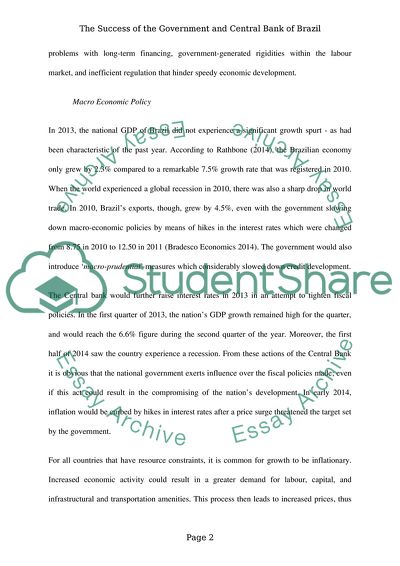How successful has the Government and the Central Bank of Brazil been Essay. https://studentshare.org/macro-microeconomics/1848560-how-successful-has-the-government-and-the-central-bank-of-brazil-been-in-running-its-economy-over-the-last-two-years
How Successful Has the Government and the Central Bank of Brazil Been Essay. https://studentshare.org/macro-microeconomics/1848560-how-successful-has-the-government-and-the-central-bank-of-brazil-been-in-running-its-economy-over-the-last-two-years.


